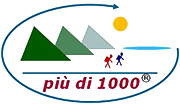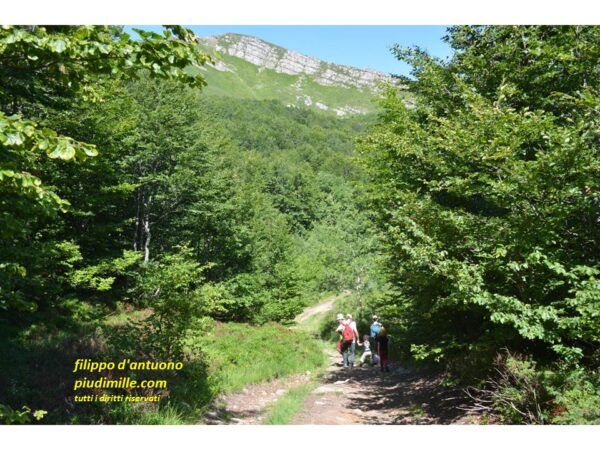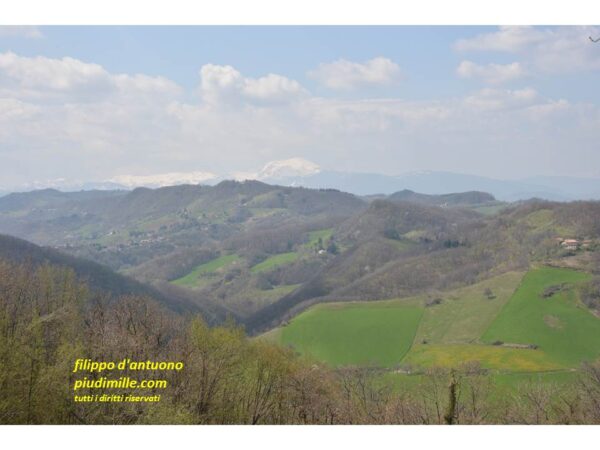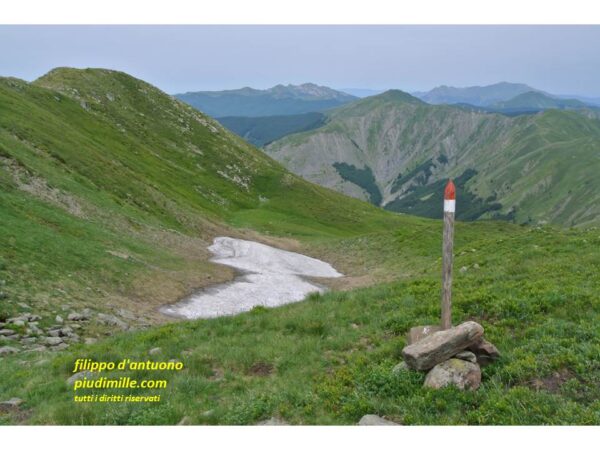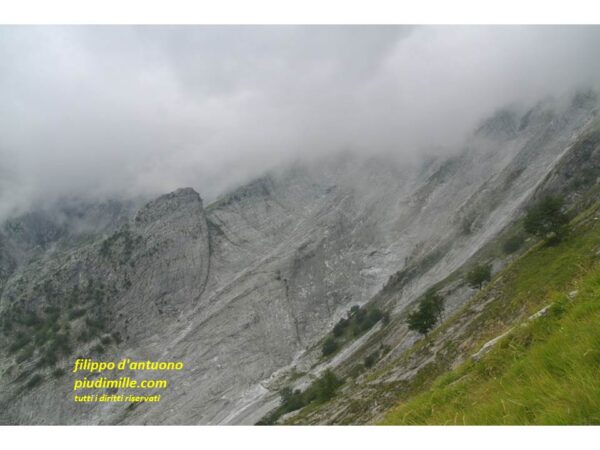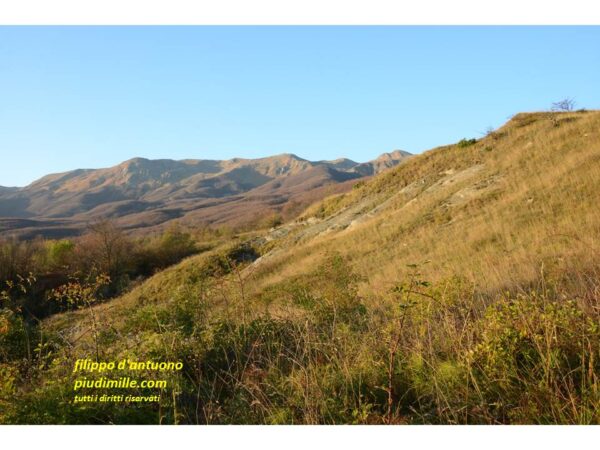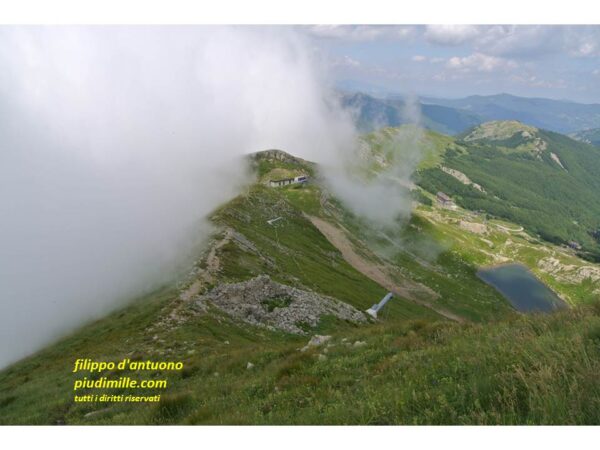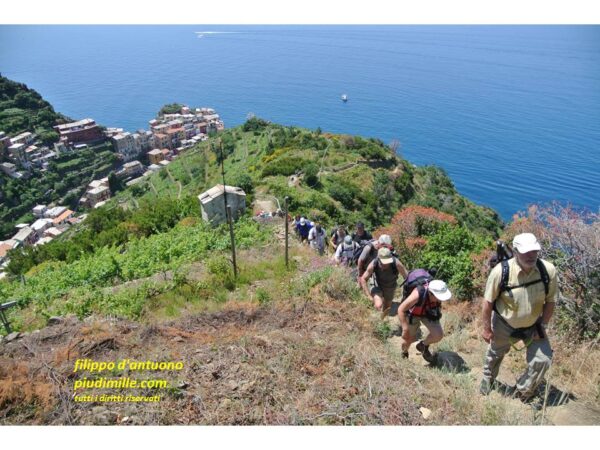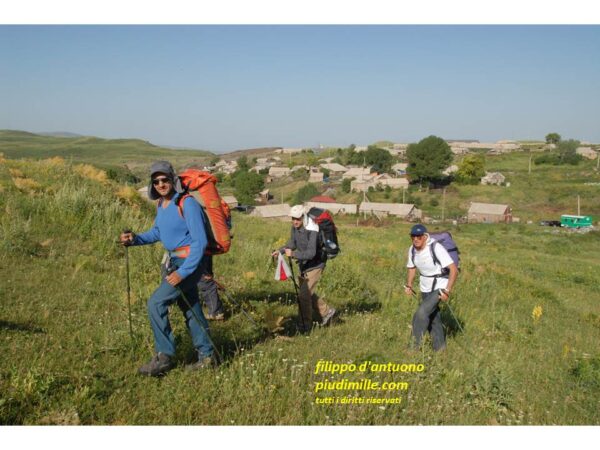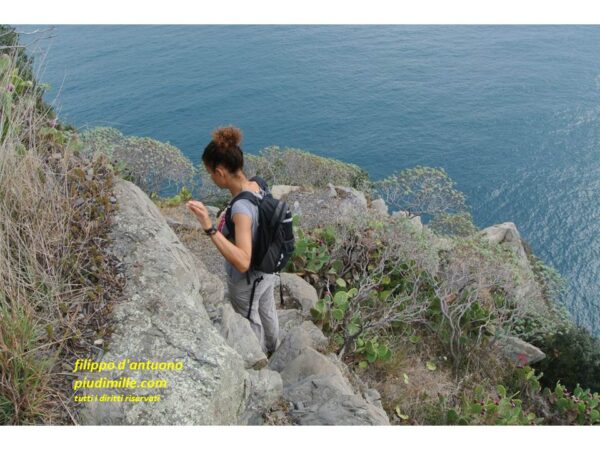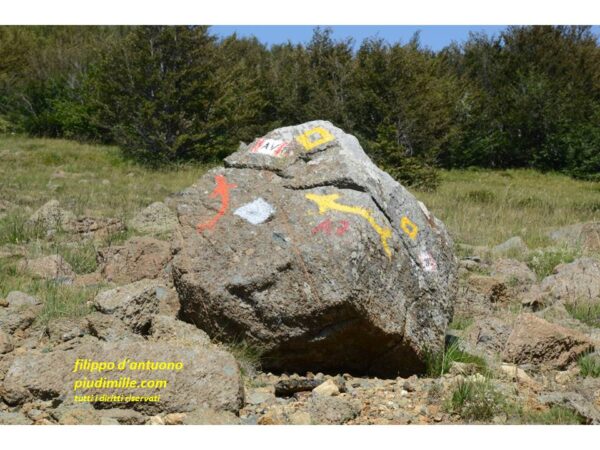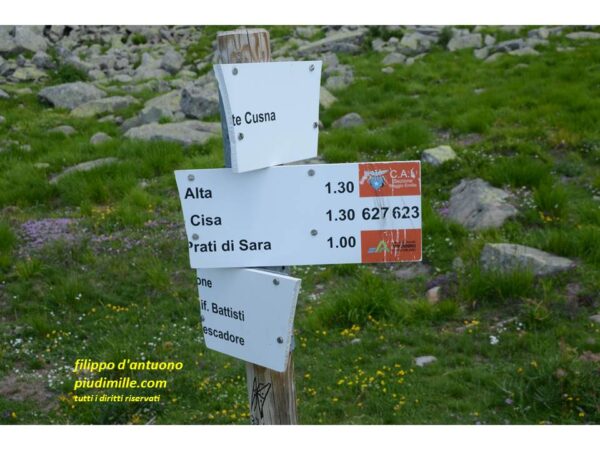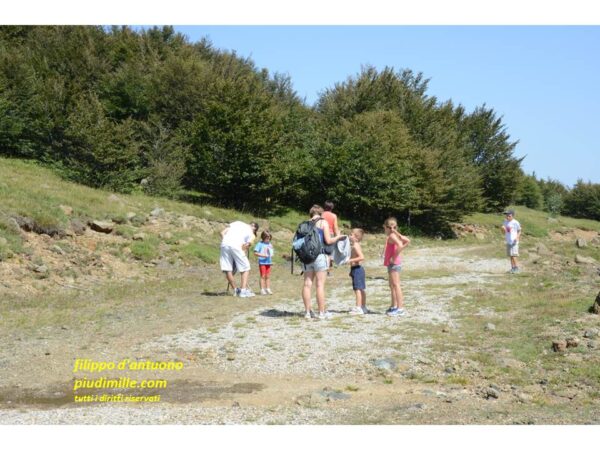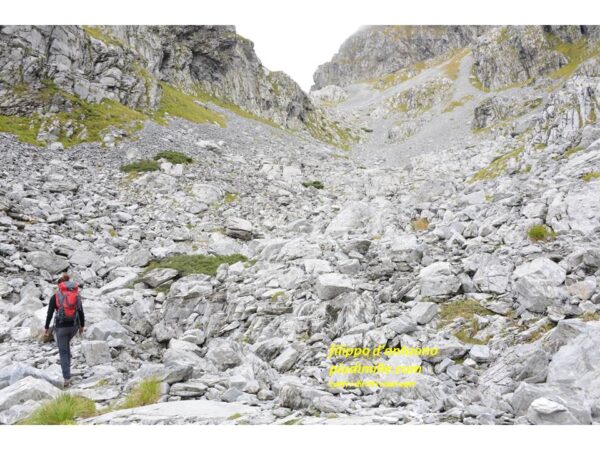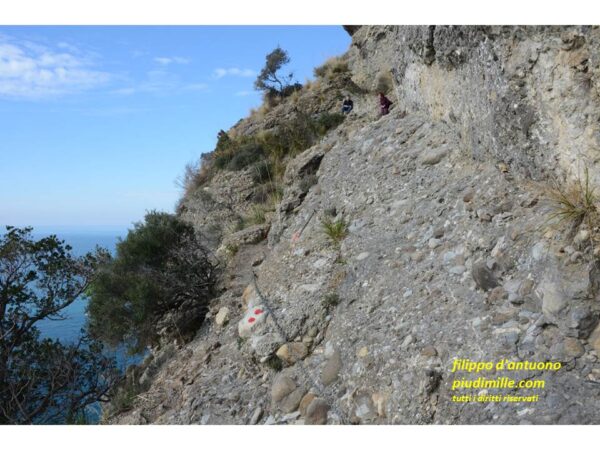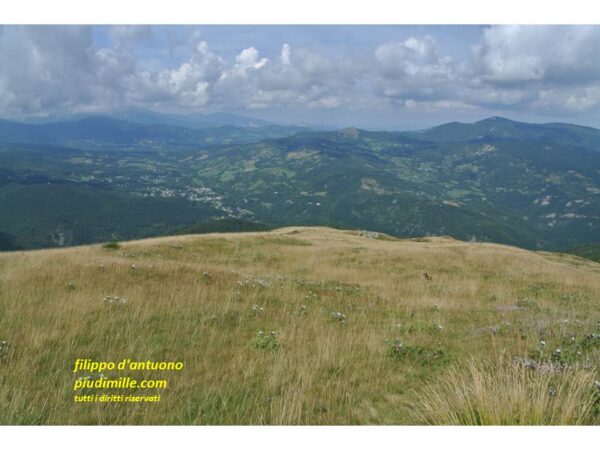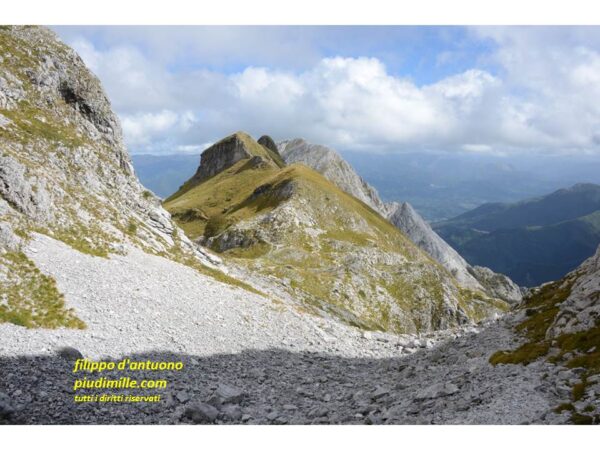Topics
- General organisation: where, when, etc.
- Equipment and supplies
- Programming: maps, trails and marks, times, difficulties
- “Dangers” and cautions
Hiking introduction. piudimille.com
Hiking introduction
Here you find my absolutely personal ideas, about what to do or not to do, what could be useful to have with us, and some other topics.
These same subjects are written in several guidebooks, from very competent authors; therefore, I will not probably add anything new, a part a bit of interpretation connected to my personal experience, that sometimes however matters.
Where to go
All what you find in this web site, if not differently specified, refers to situations without snow cover or ice; I have moderate experience of winter conditions when, for sure, the context for hiking is drastically changed. I recommend to seriously consider this fact.
Therefore, for my own perspective, the decision about where to go depends a lot also on the season.
To remain, for the time being, within the initial “core” area that I know best, the Ligurian coast is a winter target that, once tried, you will hardly abandon.
Several other hilly and mid-mountain areas are also snow-free during most of the year, although with a harsher climate than the Ligurian coast.
In summary, I substantially adopt a transhumance strategy: I follow the seasons and displace myself with them. However, to be clear: in certain places the summer season is very short; therefore, winter tourism is welcome, for the contribution it could give to local economies; but, simply, I cannot give substantial advice to winter hikers
Hiking introduction. piudimille.com
When to go
I see hiking as a pleasure, and a way to see and know places. Walking on a ridge among the fog is neither of the two, at maximum it could be an experience: you simply see nothing, and it can also be somewhat dangerous.
I have therefore a clear preference for hiking in good weather. Nowadays the instruments to achieve this goal are available. Web weather forecasts are rather reliable. It is however fundamental to have a specific knowledge of places, and the capacity to interpret the weather forecasts, also in relation to what we can actually see and perceive.
If weather forecasts are really bad in the place of your choice, be flexible: see if you could go somewhere else. Sometimes when the weather is very bad on the top ridges, but better at lower altitudes, think about staying lower: it can be an excellent occasion to explore unexpected beauties, possibly also lesser known by most.
If there is really no hope with the weather, in my opinion, it is better to give up.
In these pages I always refer to 1-2 days hikes. Of course, things maybe not so simple in case of longer treks.
Some of the best weather conditions often occur in the days or hours preceding the arrival of a front, clearing away all the local clouds and mist, hoping of course that the coming bad weather is not approaching too fast: the south west wind on the Apennine ridge are strongly unpleasant. The days following the transit of a front are generally clear and shining, although often windy and cold, especially during winter.
Starting time
Plenty of words have been generated about this topic by the mountain-men rhetoric, generally pointing at the same direction: “a true mountain man wakes up early”.
In reality, even forgetting about the not well defined “true mountain man” stereotype, starting early, also very early, has its advantages from both the organisation and safety points of view:
– for long hikes, it guarantees to have time available, to finish when it is still light;
– in summer, early morning is cooler; walking few hours with cool temperature, instead of under burning sun, is not only pleasant, but also beneficial for our body, and safety;
– when the weather is not fully stable and clouds are developing during the day, leaving early may save our hike: it is possible to reach the summits when not yet fog-capped and then, when clouds come, be already on our way back;
– early morning light is different from all the other times of the day;
– early morning is the best time to meet animals
If, for long hikes, the first point is the most important, for shorter walks the situations can be more flexible. Sometimes the weather is still recovering and, waiting a while, may allow the rain to go. And, after all, in nice, cool spring days, with stable weather, when the way to go is not so long, a bit of self-indulgency is reasonable, leaving a bit later.
However, the idea to leave early in the morning is quite in line with my concept of hiking: leaving early often means to be on place already the evening before. What a better occasion to look around and get in touch with places. It is the contrary than the “grab and go”, running to the summit and nothing else. So, make your considerations, and decide accordingly.
Hiking introduction. piudimille.com
Equipment and supplies
Light or heavy
Shoes, backpack, clothes and other
Food and beverages
Hiking introduction. piudimille.com
Light or “heavy” ?
Let’s say: I am among the ones with a strong tendency of taking “my whole house” with me, and look with substantial envy the ones going light; so, bear this in mind.
But I also never regretted to have taken with me something that then I did not use.
Nor I missed something that I did not take, but only since this seldom happened to me.
There are things that, in my opinion, it is necessary to have:
- Enough clothes, also to face emergencies; Ok, summer and winter are different matters, but keeping a stable basic equipment into your backpack is not a bad idea.
- Waterproof clothes: if the rain comes and you are not equipped, you can face unpleasant moments.
- Also consider an umbrella; maybe hardlines will make jokes on you; but an ombrella is the only thing really keepigm you dry,even since it does not make you sweather. Shapherds go with an umbrella… will that mean somethings. Unfurtunately, an umbrella is not usable with wind or among dense vegetation. Anyway, choose a small to fiti it into your backpack, and a robust one and robust one, to avoid it to be reversed bu the first breeze.
- A hat: the sun is not a friend.
- One thing not often mentioned: also in full summer, an ample and light shirt, with long sleeves; as a screen from burning sun, when it is necessary.
- A change, at least of your socks and underwear T-shirt
- A whistle: in case of emergency, you will be better heard than using your voice
- At least during the sunny season: a full protection sunscreen cream.
- A first aid basic kit
- A front light: it can happen to be late and be back when already dark.
- For food and beverages, see the dedicated paragraph.
- Your mobile phone
In summary, I would say: get acquainted to have with you a decent basic equipment, without exceeding. You will get acquainted to this standard weight of your backpack, and you will never regret.
Shoes, backpack, clothes and other
And here comes the hard part : it is enough to enter a shop to get lost.
Choosing what to buy is a trial-and-error procedure, also requiring a bit of your previous experience.
Feet are your means of locomotion, so they must feel well. And this will mostly depend on the shoe and socks combination.
Socks. Use technical soks of suffcient thickness, whatever the season. Personally, I have for long time had a preference for the Merino wool socks, available of different thickness, for every season. Nowadays excellent socks of synthetic materials are however also available, with similar choices and similar prices.
Shoes. You can find any type of ground during your hikes. Try to exclude shoes with too thin, not well sculptured soles. Then, you can range from light trekking shoes, but with adequate sole, to the classical mountain boots. The first ones can be attractive in summer, especially if they have a net-like upper, keeping your feet fresh; but, wear them anyway together with adequate socks. If you are able to “walk well”, you can go almost anywhere with them, with warm and dry weather. Of course, on rocky ground you will feel the stones on the sides of your feet, and you may regret a more robust shoe type. Especially in woodlands, with the ground covered by a mat of leaves, almost anything can enter into in your light shoes. It is finally a matter of fact that if you seek for water proof, or thermal insulation, light shoes are not appropriate.
Generally speaking, I would say that light shoes will be feet-friendly for not too long and demanding hikes; otherwise, more robust shoes tend to win. A special mention is for hiking sandals that may represent a very interesting option, in some circumstances: see a specific post about this.
I’d like to stress what is, in my opinion a fundamental point, in choosing shoes. Forget about the old story that new shoes can initially give pain to your feet, then they will fit with time: this may be catastrophic. When you try shoes, you must immediately feel well with them. And with “well” I intend not tight, without any kind of rubbing, anywhere, and that your toes do not impact the shoe tip.
Similar considerations hold for your backpack. It must be first of all comfortable for you; and here the thing is not easy, since you will try it empty. Then, do not think about mini-backpacks, that are generally of little use. If you can afford, buying two backpacks of different size can be a not bad idea: for sure, the amount of things to take will differ on a half day spring walk, from a full summer daily hike, when you will be loaded with liquids, or from a winter one, when you will be loaded with clothes. The rain cover is a not negligible accessory. Backpacks are very variable, with respect to the material they are built of: some of them rip off very easily, sometimes not exactly in relation to their price… but more than this, I cannot say.
Clothes. An advice, not original, anyway: dress in layers; bring with you all what you may potentially need. Dress or undress each time you need, do not be afraid of losing time. As an example, during winter hikes along the Ligurian coast it commonly happens to shift from a T-shirt, when ascending steep slopes, to T-shirt+shirt+sweater+paddled jacket+ K-way, during pauses to eat, at relatively higher altitudes.
Hiking poles and your bottom. I was born without hiking poles and I am pretty slow to adopt new technology. But, every now and then, I use poles and they can be useful.
What I can say, for sure, is that you must walk on your feet and legs, not on your arms. You must all the time have firm support on your feet. Also recognising the utility of a balance, most people that I see walking slowly, being unstable and at risk of falling are the ones leaning on their walking poles instead of walking firm on their feet. Walking poles can be helpful for uphill progression at two conditions: you have to be able to use them properly and your arms must be fitted enough, otherwise you will be soon exhausted.
Some considerations about the use of your bottom; in general, we tend to use it as a help slipping downhill; it can be a comfortable help, provided you use it for one of its typical functions, that is simply to sit still; but starting to descend again, you have to stay firmly on your feet; at maximum, use your hands to help; your bottom is not prehensile, and is of a shape that will never hold you.
Hiking introduction. piudimille.com
Food and beverages
Liquids. Somebody needs to drink a lot, somebody less. It happens to me to drink 6-7 litres of liquids, during full day summer hikes. For sure, you must promptly re-introduce the liquids you lose.
I cannot tell you that mountains are an idyllic place where you always will find water; besides the fact that this is not always true, then:
– you will not always being walking on the mountains;
– water is not always safe; be always cautious with surface water, even from apparently clear streams; and be also cautious with spring waters, especially downhill of grazing areas.
You should know your personal needs, in relation to your hiking program, know if you will meet reliable water points, bring with you all what you need. Of course, each litre is more or less an additional kg load, but there is no alternative.
Together with water you will lose salts; excessive salt loss may cause muscle spasms, and also diminish your concentration level, that is instead very important to keep. Try to get acquainted to recognise this symptom and refer this to a lack of salts and liquids.
Then you also burn sugars to produce energy; if you burn too much of them, you may at least experience hypo-glycemic crisis and feel very weak.
Drinking can be a way to attenuate both problems. In commerce, several drinks containing both sugars and salts are available. Having some with you, besides water, is not a bad idea. Otherwise, if you really do not like them, you can use powder integrators, to be dissolved in water. Other options are tea, or whatever else can be of personal likes. I use a lot thick fruit nectars, sometimes diluted in water, that are food and beverages at the same time.
Food. You should have an adequate amount of food with you. That means, some cookies, or dried fruits, for short hikes, to all what you need for intense full day hikes. Also in this case, take into account personal likes, besides dietary and common sense basic concepts, that I will not recall here. Some pasta, rice, bread, and something to accompany bread… I recommend to bring something juicy, fruits or vegetables, that help a lot. And, above all: bring food that you like, that you can swallow easily.
Cookies and dried fruits are anyway useful, to chew anytime you feel the need.
Candies, the ones with sugar, not the “light” ones, together with a saline-energetic beverage, can give you a push of energy when you need to produce a peak effort: sooner or later, it will happen to be late, or to accelerate to escape bad weather.
Hiking introduction. piudimille.com
Programming: maps, trails and marks, times, duration, difficulty
Itineraries and maps
Trails and marks
Walking times, duration, difficulties
If you prefer guided hikes, perhaps you want to enjoy hiking without bothering too much with the following aspects of organisation. In this case….. welcome anyway, and I hope to be able to serve you well.
But, it may be that you want to have anyway a basic background information.
Hiking introduction. piudimille.com
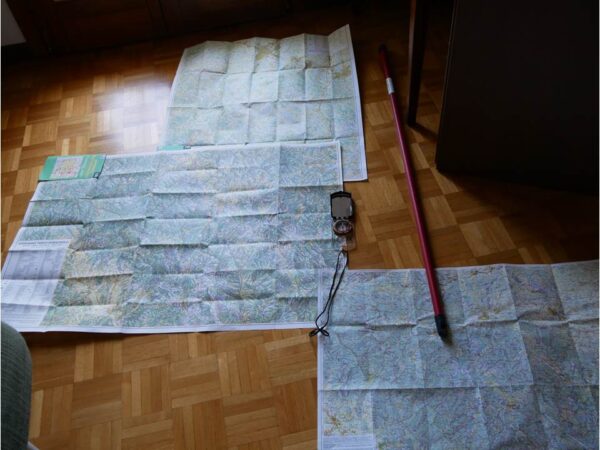
Maps laid on te floor at home, for a first glance at itineraries
Itineraries and maps
The decision about where to go, will represent the starting point of your hiking project; it may start as an idea, almost a dream; then it must be structured.
The starting point is usually something that hit our imagination: an image, a memory, an evocative name. It rarely happens to make mistakes: taking things with the appropriate mood, we will almost always find something beautiful to see, to listen to, to live.
But, to avoid making mistakes and be able to really live the places, your fantasy should not be too limited by improvisation. You must create adequate space for fantasy, but also consider practical things of organising the trip, finding where to stay, unexpected facts…; otherwise fantasy could remain prisoner of mis-organisation.
Start with good maps. Forget for a while to be in the digital era: go with true paper maps. Well done road maps are an excellent starting point to preliminary plan your trip, either for a week end or for a longer period. They give you a geographic overview of places, where you can start seeing the places of your imagination. Then, if you prefer Goolge maps to calculate distances and estimate times, that’s OK; there you can also see all the satellite details, but do this at a second stage.
For the true hiking part you will then need hiking maps. And here there is no Google anymore. On hiking maps you have the trails, and their marks, in a global view for a whole area, that you will not find even on the GPS maps.
Thing to be considered:
– some areas are well equipped with marked trails, some others are not;
– not always an updated map will be available, even for areas with marked paths;
– on the contrary, in some other cases you may find more than one maps. A further advice: if it is affordable for you, buy all the ones you find and compare them; often they may substantially differ, in some parts;
– some of the paths represented on maps may be almost disappeared on the ground, or the marks may be very old, hardly visible;
– in some other cases, the marks on the terrain are update, but the maps are not…
– sometimes you find tracks with multiple and different marks; a bad habit, but that is.
So, what to do? The ideal situation is to have good quality maps, reporting not only the marked trails, but also the details of topography, and to be able to read them. In this way, it will be very difficult to make relevant mistakes. As soon as you acquire experience, your satisfaction will increase. You will be able to estimate distances, slopes, and walking times: an optimal situation to safely and happily enjoy your itinerary.
Once acquired the material you need, plan your trip / hike on the basis of your available time, your experience with places and maps.
GPS, and other electronic instruments. A GPS can be a fundamental instrument, provided you can use it properly. It is a guarantee of safety, since, if properly used, it will always let you find your way back: this is a very important function in situations of lack of known landmarks, along not well marked paths, such as inside dense forests or among fog. A GPS shows your altitude, a very useful element to determine your position. A GPS also directly gives the geographical coordinates of your point: this is fundamental in case of a rescue call. This is however less useful to determine your position are in case you are lost: to render on a map the geographic coordinates you really need good experience. A GPS may also allow to track a known point, and try to reach it; however, also in this case, it is not enough or it can be even dangerous, if you do not exactly know what is between you and the target point. Finally a GPS is fundamental to track un-marked trails, but you perhaps will not use this possibility. In my opinion, a GPS is somewhat less useful to plan an itinerary: for this, paper maps are far better. So, buy a GPS, if you like it, but do not make it the only instrument for your hikes, and learn also to walk without it: you will enjoy it best with a consolidated experience of using the maps to read the land features around you.
I do not have enough experience of the different Apps running on smartphones, to give you detailed advices. Maps are better visible on phones than on GPS. Some smartphone Apps should work well for an average hiker. Also in this case, however, phone Apps cannot replace your awareness of land features and the knowledge of your physical position. The available app are in great numer; I only maka a consideration: very often I see people walking in nature following theri phones, but not knowign where they are, niot noticing what is around…
Hiking introduction. piudimille.com
Trails and marks
Trails can be marked on the terrain. The more widespread system in Italy is by far the one of the CAI (Italian Alpine Club), using white-red marks with a number; there are however some other systems, sometimes prevailing in some areas.
The chaos is sometimes generated by systems of fantasy, overlapped to the already existing ones; in this case, other marks, fantasy names, do appear, aimed at catching the imagination: the path “of brigands”, “of spirit”, “of strawberries”, “of holy forests” and so on; not to speak about long trials, like the several “alte vie” (high trails), the “Italy trial”, and the several “cammini”, which number is on the raise. These initiatives were sometimes also generated by good intentions, but almost always on the wave of ideas and available money, that left traces on the land, without thinking that such systems, once put in force, also need maintenance. On the contrary, when money is gone, maintenance ends and everything slowly fades. It seems that inventing or tracing paths every now and then became fashionable for administrators and their consultants.
But these details are of no interest to hikers, as a principle, but for the confusion they may generate. Sometimes it will therefore happen that you have to carefully check your itinerary. To stay on the safe side, always plan some alternative, also considering that not finding a path may at least cause great time loss. Or, better, take the time for an preliminary exploration, to be then sure of your way.
Hiking introduction. piudimille.com
Lets’s start with difficulties
Accepted scales used to rate hiking difficulties vary among countries; their rationale is illustrated in almost all the well-done guide books, and in several internet sites. You can find some of them also on Wikipedia.
Referring to the Italian classification, consider that the T (touristic) trails are for whoever can walk; the E (hiker) trails, are for people with some habitude to wealk on rough terrain; the EE (expert hiker) trails could generate some anxiety to many. Especially for EE tracks, the situations however vary a lot: the classifications are indeed created by men, leaving therefore ample subjectivity margins.
You will learn yourself how to evaluate, by experience, and by comparing the classification of a path with the feeling you will have while trying it: if you do not feel well, give up.
Hiking introduction. piudimille.com
Times and duration
Besides the difficulty rating, many minor or substantial details not representable by any classification, can however make the difference in terms of required time, effort and cautions: see the next chapter.
Another thing you will often read on guidebooks is the dependence of downhill and uphill walking time on gradient and length. That’s certainly true, but is not the only determinant of duration.
For the time being, I note the following points.
It is generally assumed that ascending is slower than descending. Let’s say that that’s true in most cases. But, very steep descents with difficult terrain, can oblige to walk as slowly as ascending along a similarly steep slope, sometimes even slower: the kind of terrain can indeed drastically affect walking speed. If the ground is smooth, walk can be smooth and fast. If it is stony, eroded, covered with leaves, with tall grass hiding your steps, walking times will change a lot, with the same length and gradient. Therefore, each individual trail requires its own time. Also in this case, you will satisfactorily learn by experience.
There is finally an individual component: some people are extremely fast ascending, by are as slow as snails descending; once more, get learn to know yourself.
Among things you read on guidebooks, one is certainly true: besides walking, you must also rest. Take as a golden rule the statement that about one quarter of the time, so about 15 minutes each hour, or 1 hour each 4, should be devoted to rest. Then, it will be your choice how to partition your time: generally a longer rest is done at lunch time, with many shorter ones along the way.
Even in this case, things vary: for a short hike, which itinerary you know well, you may also try a bit yourself, have little rest and walk fast; for long hikes, be more relaxed, if not in case of an emergency.
In any case, forget that the overall duration of your excursion could merely correspond to your walking time.
Hiking introduction. piudimille.com
